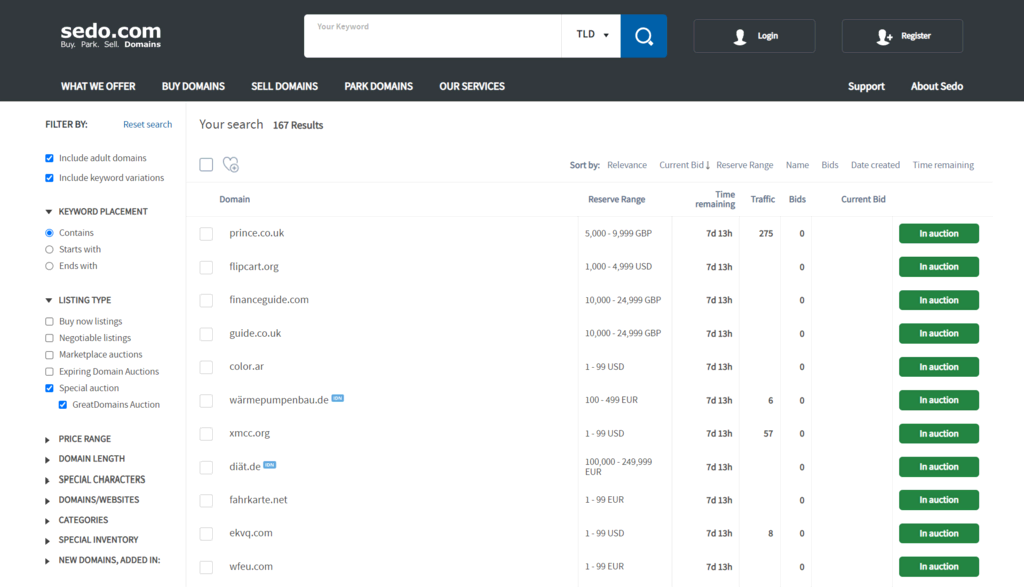How to Buy and Sell Domain Names for Profit
Buying and selling domain names, also known as domain flipping, is a profitable venture for those who understand the nuances of the domain name market. It involves purchasing valuable domain names at a low price and reselling them at a higher price for profit. While it might seem like a simple concept, successful domain flipping requires market knowledge, research, and a good understanding of domain valuation.
In this guide, we’ll walk you through the steps of how to buy and sell domain names for profit, including tips for finding valuable domains, determining their worth, and selling them effectively.
1. Understanding the Domain Market
Before you begin buying and selling domain names, it’s crucial to understand the domain market and how it works. The value of a domain name depends on several factors, including:
- Keyword Relevance: Domains with popular or high-demand keywords are often more valuable.
- Length of the Domain: Short, easy-to-remember domain names tend to sell for more than long or complicated ones.
- Brandability: Domains that are catchy, brandable, and easy to spell are in demand.
- Extension: While .com domains are the most valuable, other extensions like .net, .org, or niche TLDs can also be profitable.
- Market Trends: Staying updated on industry trends and emerging markets can help you spot potentially profitable domain names early.
2. How to Find Valuable Domain Names
Finding valuable domain names is the most important step in the process of domain flipping. Here are some strategies to help you uncover domains that have potential for resale:
- Expired Domains: Domains that are about to expire or have already expired can often be bought at a low price and resold for a higher value. Use domain auction sites like GoDaddy Auctions, NameJet, or SnapNames to bid on expired domains.
- Keyword Research: Look for domains that include high-traffic keywords relevant to popular industries. Tools like Google Keyword Planner or SEMrush can help identify profitable keywords.
- Trending Topics: Keep an eye on emerging trends or niches. Domains related to new technologies, viral events, or trending industries can be highly profitable.
- Check Availability: Use domain registration tools (like Namecheap or GoDaddy) to check whether your desired domain is available for purchase. If it’s already taken, you can try reaching out to the owner to negotiate a purchase price.
- Brandable Names: Focus on short, memorable, and brandable names that are easy to spell and pronounce. These names are often in high demand for businesses looking to create a strong online identity.

3. How to Assess Domain Name Value
Not all domains are created equal, and determining their value is key to making a profit. Here are some factors to consider when assessing a domain’s worth:
- Length: Short domains (especially those with fewer than 10 characters) are generally more valuable than longer ones. They’re easier to remember and type, which is crucial for branding.
- Keyword Relevance: Domains with popular or high-traffic keywords will have a higher value, as they’re more likely to drive organic traffic to a website.
- Extension: .com domains are the most valuable, but certain niche extensions, such as .ai for tech startups or .io for digital businesses, can also be profitable.
- Market Demand: Research the industry or niche your domain belongs to. If the market is growing or in demand, your domain may have increased potential for resale.
- Comparable Sales: Look at comparable domain sales to understand how much similar domains have sold for. Websites like NameBio can provide historical data on domain sales, which can help you gauge the price of your domain.
4. How to Buy Domain Names
Once you’ve identified valuable domain names, the next step is to buy them. Here’s how to go about it:
- Domain Marketplaces: Platforms like Sedo, Flippa, and GoDaddy Auctions allow you to browse and purchase domains. You can find both expired and actively listed domains for sale, and these platforms often provide auction-style bidding.
- Private Registrars: Some domain owners may not list their domains for sale publicly but may be willing to sell if approached. Use a domain broker or contact the domain owner directly to negotiate a purchase.
- Negotiate: If the domain you’re interested in is already owned, try to negotiate with the seller to buy it at a reasonable price. Many domain owners may be willing to sell if the price is right.
5. How to Sell Domain Names for Profit
Once you’ve purchased valuable domains, the goal is to sell them for a profit. Here are the best ways to sell domain names:
- Domain Marketplaces: Listing your domain for sale on popular platforms like Sedo, Flippa, or Afternic can help you reach potential buyers. These platforms allow you to set a fixed price or list the domain in an auction.
- Direct Outreach: If you’ve purchased a domain related to a specific business or industry, consider reaching out directly to companies or individuals in that niche. Craft a compelling message that explains why the domain is a valuable asset for their business.
- Use a Domain Broker: If you have a high-value domain and want to maximize your sale price, consider hiring a domain broker. Brokers are professionals who specialize in buying and selling domains and can help you negotiate a higher price.
- Create a Landing Page: For high-demand domains, create a simple landing page with an inquiry form and a clear message that the domain is for sale. This can attract interested buyers and help you sell the domain more effectively.
6. Legal Considerations and Domain Name Ownership
Before buying or selling domain names, ensure that you understand the legal aspects of domain ownership:
- Domain Ownership: Ensure that the domain name is registered under your name and that you have the legal right to sell it. If you’ve purchased a domain through an auction or marketplace, you should have full ownership of it.
- Trademark Infringement: Avoid purchasing domains that infringe on existing trademarks. Selling domains that are confusingly similar to trademarked names can lead to legal issues and potential losses.
- Transfer Process: Make sure you understand how the domain transfer process works. When selling a domain, you’ll need to transfer it to the buyer’s account with the registrar, which involves paying a transfer fee.
7. Tips for Success in Domain Flipping
- Be Patient: Domain flipping is not an overnight get-rich-quick scheme. It takes time to find the right domains, assess their value, and negotiate a sale.
- Stay Informed: Keep up with the latest trends in the domain industry and new technology. Domain markets can change quickly, so being informed will give you a competitive edge.
- Start Small: Begin by investing in a few domains to get a feel for the market. As you gain experience, you can scale up your investments and start buying and selling more valuable domains.
Conclusion
Buying and selling domain names for profit can be a rewarding business if you approach it strategically. By understanding the domain market, identifying valuable domain names, assessing their worth, and using the right selling platforms, you can turn domain flipping into a lucrative venture. With patience, research, and persistence, you can generate substantial profits by flipping domain names. Whether you’re looking to make a side income or build a full-fledged domain business, domain flipping offers opportunities for those who are willing to put in the effort and stay informed.



